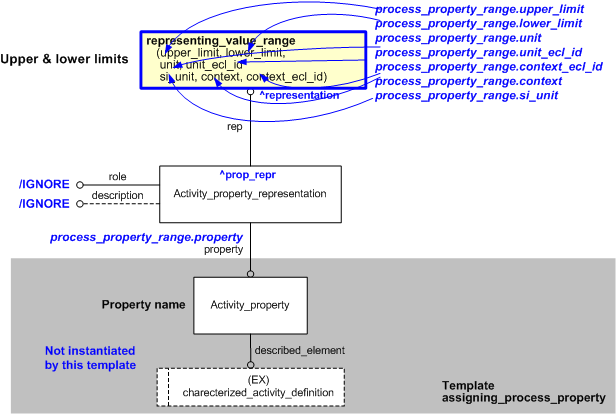
| Template:— process_property_range (proc_prp_range) | Date: 2009/03/24 12:40:21 Revision: 1.20 |
This section specifies the template process_property_range.
NOTE An explanation of a template and the associated instantiation path is provided in the Template overview section.
This template describes how to represent a numerical value range for a process property.
NOTE Where different techniques or methods are used to estimate, measure, calculate or collect the values of a property, it is advised that this template is used more than once and related to the same property instance. Further, the name of the property should not include any qualification such as the technique or method e.g. weight not estimated_weight.


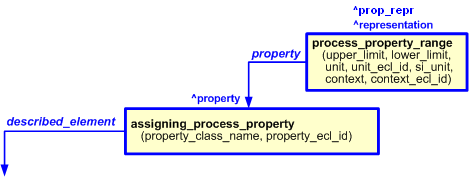
target
is the parameter to which the
Activity_property_representation
is bound.
target
is the parameter to which the
Property_value_representation
is bound.
| Entity in path | Value | Inherited from |
| Activity_property_representation.role | '/IGNORE' | — |
| Activity_property_representation.description | '/IGNORE' | — |
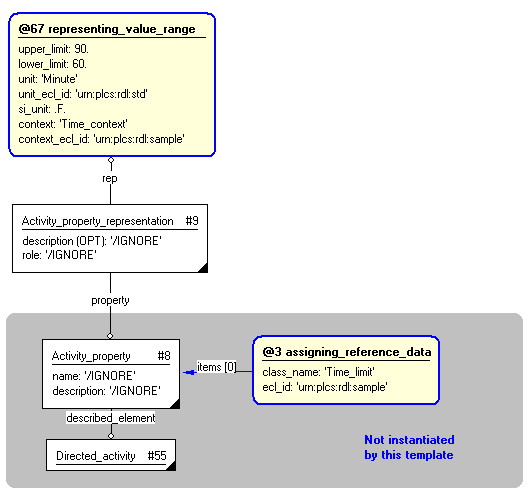
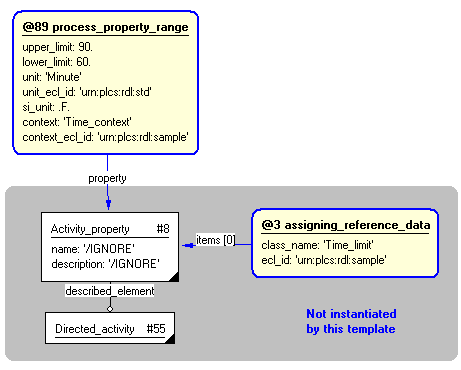
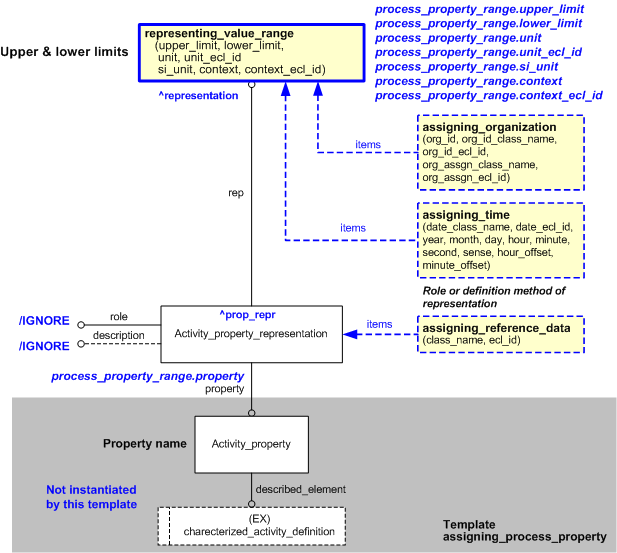
NOTE this characterization is optional.
A role or definition method can be associated with the property representation by using the template assigning_reference_data assigned to Activity_property_representation (reference parameter ^prop_repr).

NOTE this characterization is optional.
Dates can be associated with the assignment of property value representation by using the templates assigning_time.

A creation date is commonly assigned to the template process_property_range.
The date of creation of the property value representation is represented by using the template assigning_time to assign a date and time to Property_value_representation (reference parameter ^representation in template representing_value_range). The date and time assignment is classified as: "Date actual creation" (urn:plcs:rdl:std:Date actual creation) to indicate that it is the date (and time) when the property value representation was actually created. This is illustrated in Figure 8.
Other dates may be assigned instead.
NOTE this characterization is optional.
An Organization or a Person_in_organization can be associated with the property value representation by using the templates assigning_organization, or assigning_person_in_organization.
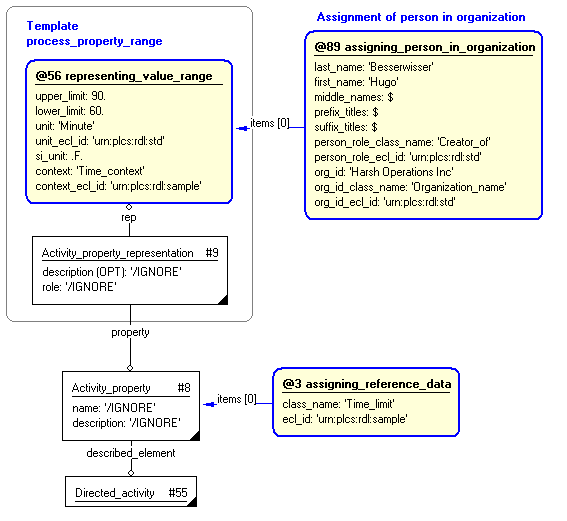
A common role in which an organization is assigned to a property value representation is as a "Creator of" the representation. The creating organization is represented by using the template assigning_organization or assigning_person_in_organization assigned to Property_value_representation (reference parameter ^representation in template representing_value_range). The assignment of the organization (Organization_or_person_in_organization_assignment) is classified as: "Creator of" (urn:plcs:rdl:std:Creator of) to indicate that this organization created the property value representation. This is illustrated in Figure 9.
Other roles of an organization with regard to a property value representation may be assigned instead.
© OASIS 2010 — All rights reserved